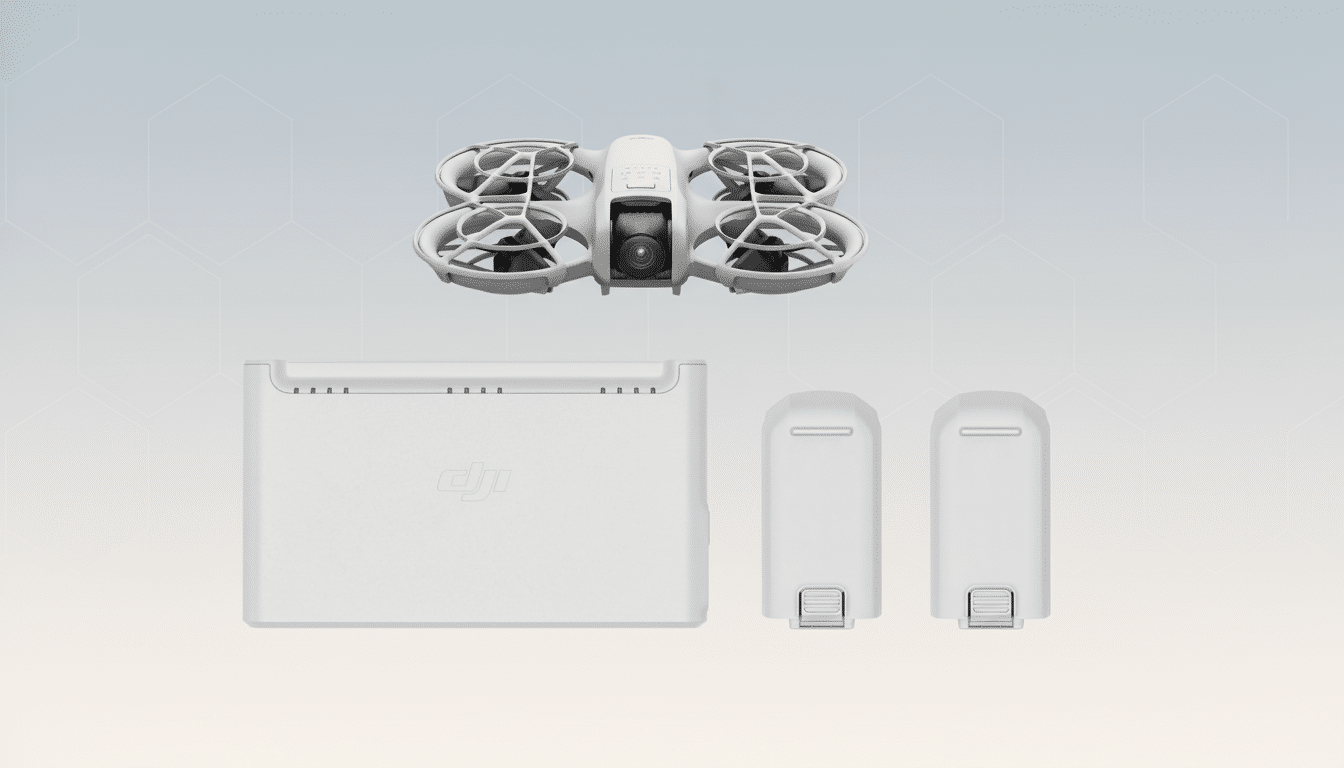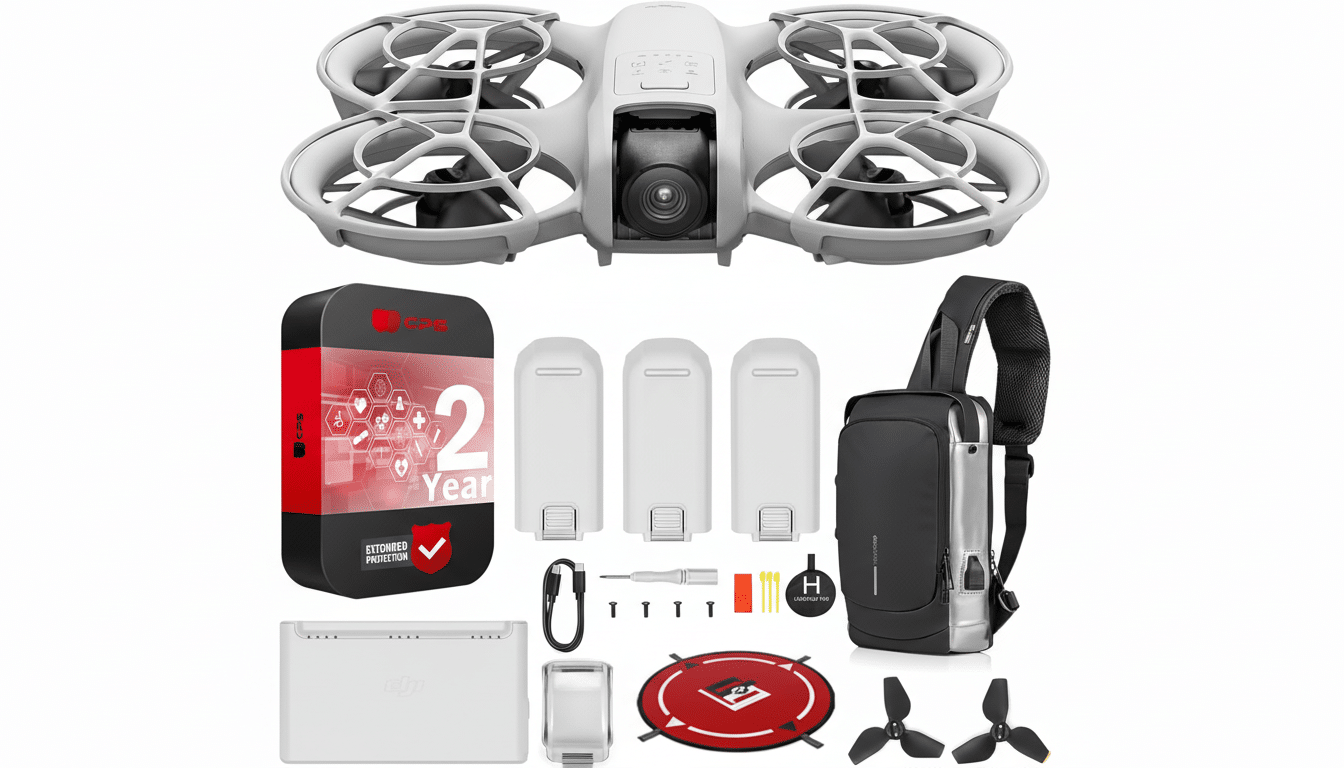The most portable DJI drone in my arsenal just hit its lowest price on Amazon, making it a top choice for any traveler or creator. The DJI Neo is just $159 now, a full 20% off its normal asking price of $199, and that finally makes a nimble little micro drone that’s safe to fly into your face or the eye of your nearest neighbor available for far less than the price of a proper camera quadcopter.
Why this DJI Neo discount is a standout value today
DJI isn’t one for promos, so a double-digit discount on an updated model is noteworthy. At that price, the Neo is cheaper than many entry-level camera drones while keeping the experiences that count: its ability to launch easily, capture stabilized video, and its smarts to automate more for you. The value-per-gram is exceptional for travelers who prioritize packability over top-end specs.
- Why this DJI Neo discount is a standout value today
- Designed for travel and tight indoor spaces
- Smart shots without extra gear or a controller required
- Real-world use cases where tiny drones truly excel
- Travel and compliance basics for sub-250g DJI flyers
- What you give up at this low price point and why
- Is it worth buying the DJI Neo at this price now

Designed for travel and tight indoor spaces
The Neo tips the scale at a svelte 135 grams — roughly half the weight of DJI’s Mini-class models — so it slides into a jacket pocket and disappears in a carry-on. Built-in prop guards reduce the risk of crashing while you’re inside or in tight spaces and can also act as a thin layer of protection around the props when flying through tight gaps. Like all sub-250g flyers, wind is the trade-off, but you gain so much confidence when flying indoors.
Battery life is just north of 17 minutes in ideal conditions, plenty of time for brisk sequences on the fly. That window is for your grab-and-go moments, says Tafari (read: alleyway reveals, walk-and-talks down an urban corridor, or a one-take swoop across a lookout point before the light shifts).
Smart shots without extra gear or a controller required
What makes the Neo so appealing is how it exemplifies “show up and shoot” ease. Footage remains watchable thanks to a single-axis gimbal and electronic stabilization, and the drone can perform QuickShot-style moves without a separate controller:
- Follow
- Dronie
- Circle
- Rocket
- Spotlight
There’s also a Custom mode for more cinematic arcs when you’re looking to inject a little spice in your reel, including:
- DirectionTrack
- Helix
- Boomerang
Another win for the traveler: 22GB of included storage. Omitting a microSD card is one less potential failure point and makes your workflow quicker. Choose a safe altitude, select your maneuver, and take the clip; it’s made to avoid fiddling so you can concentrate on the moment.
Real-world use cases where tiny drones truly excel
This drone does what big rigs cannot. I’ve flown it for B-roll down narrow museum aisles, between architectural beams, and under footbridges where a full-size quad would feel too risky. In tight travel itineraries, that ability to launch, frame up, and land in less than two minutes can be the difference between getting usable shots without upsetting the plans for the rest of the day.

For content-first workflows — short-form travel diaries, behind-the-scenes shots, establishing footage — a relatively small amount of setup captures an unexpected number of angles. You won’t get full three-axis gimbal smoothness (for that you’ll still want a Mini 4 Pro–class drone), but for social-ready clips and quick cutaways, the Neo punches above its weight.
Travel and compliance basics for sub-250g DJI flyers
There are practical regulatory advantages that follow from the Neo’s weight of 135g. In the USA, the FAA doesn’t mandate recreational registration for drones weighing less than 0.55 pounds (250g), and those are broadly the same limits we expect to see on Remote ID requirements. In the EU, EASA rules rank sub-250g drones in the A1 category, with looser flying restrictions — like being able to fly closer to people — than heavier classes. As ever, ensure that you check local regulations, no-fly zones, and web pages to see city-specific ordinances before you fly.
On planes, lithium-ion drone batteries smaller than 100Wh are generally allowed in your carry-on based on most airlines’ policies; the Neo’s packs fall well under that limit. Guard your batteries against short circuits when unused (use storage terminal covers or a battery’s protective case); store in a partially charged state for longevity — a protocol that aviation authorities and battery makers both recommend.
What you give up at this low price point and why
Micro drones have physics working against them in a gust, and the single-axis gimbal won’t provide the same cinematic glide of higher-end three-axis systems. The flight time is serviceable and not something that will last a marathon. If you plan to shoot long-distance panoramas, do heavy color grading, or work as a professional in varying weather conditions, step up a tier.
Is it worth buying the DJI Neo at this price now
And, at $159 apiece, the DJI Neo makes for an easy recommendation — for travelers and newbies as well as those experienced pilots who want a safe, indoor-capable scout at the ready all of the time.
It’s not often a current DJI drone sinks this low, and the trifecta of sub-250g convenience, onboard storage, and near-magical smart shots without a controller keeps the Neo among great values while it lasts.
If your top priority is squeezing more shots into a travel bag, with less gear to haul around, this is the compact drone to grab — and especially so at an all-time low price.

